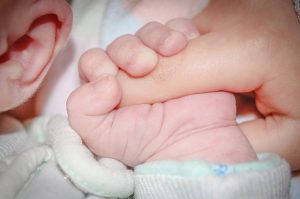
“’The operations will take place before he is two, so he won’t really remember anything about them.’ It was really put across to us like that”, says Marianne Versaevel, a mother of a baby with medical problems. “More than twelve years ago, that was still the common view held in the hospital. The operations were of course unpleasant and full of risk, but our son should have few memories of them, so ‘no worries’ on that front.”
Below, Versaevel recounts her experiences.
I soon began to question it. When at nursery, for example, he began to panic every time a father with dark hair came to collect their child. The doctor that treated him at that time was, indeed, a man with dark hair.
He also panicked whenever a hairdresser’s tunic or painting smock was put on. That was a real ‘no-go’. When I stopped to think about it, I realised that they looked an awful lot like surgical gowns. He wasn’t even two years old then. But he clearly had memories. He still didn’t have language at his disposal, so had no memories in words. He was also unable to put the images or feelings that he had into words. But it was certainly obvious that he remembered something.
Luckily, ever more attention is being paid to the fact that babies do remember something about potentially traumatic events. It’s just that you primarily store these events in your body. ‘The Body Keeps the Score’ by Bessel van der Kolk explains this brilliantly. And I saw it with our son.
An early childhood trauma is especially troublesome, because you can’t talk about it. You don’t possess words as a baby or toddler. But the insecurity, the vulnerability, the pain that you have experienced, smells, images, noises, they are stored as memories in your body.
With our community we want to improve the quality of life of people with vascular malformations. CMTC is a rare condition and that is why we think it is important that everyone who has CMTC, or other blood vessel abnormalities, can get in touch with each other.
With the aid of body-oriented therapy, such a trauma can gradually become manageable. My son learned that he is no longer that vulnerable baby from back then, but a big boy who can have self-control over things. He’s allowed to take control. He’s learning to feel what stress does to him. And that his survival strategy (to crawl into his shell and shut himself off) was very logical, but is not always necessary now. And is sometimes even a hindrance. He’s learning to make contact with his body and recognises signals.
What a journey for a child that should no longer be able to remember anything about it… And it’s brilliant that nowadays EMDR (Eye Movement Desensitisation and Reprocessing) can be used for preverbal trauma at a young age. To prevent that which is in the body from wearing in as patterns that are virtually impossible to alter. For babies may not be able to talk, but they feel all the more.
Marianne Versaevel, 2021
You can find scientific substantiation in the work of Bessel van der Kolk or Peter Levine, amongst others. Bessel van der Kolk is an American psychiatrist who has carried out a great deal of research into trauma. He began with veterans with PTSD (Post Traumatic Stress Disorder), and expanded this to other traumatic events, such as abuse in early childhood. In academic hospitals, for example, EMDR is increasingly being used in medical psychology for early childhood trauma. There, EMDR is administered by means of storytelling by the parents. Peter Levine is the author of the book ‘Waking the Tiger’. He has developed a psychosomatic approach whereby the body is treated to deal with the trauma.
With our community we want to improve the quality of life of people with vascular malformations. CMTC is a rare condition and that is why we think it is important that everyone who has CMTC, or other blood vessel abnormalities, can get in touch with each other. We cannot do this without the sustainable support of our donors or input from our involved members.





